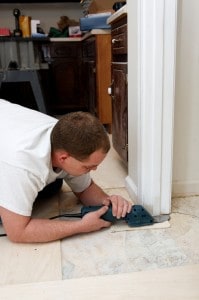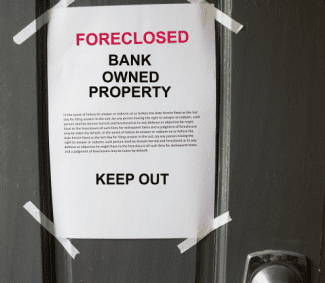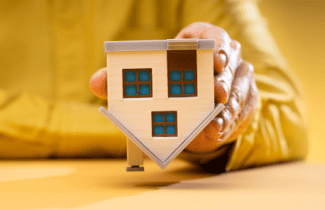Permanent Fix for Wet Bathroom Floor
Replacing vinyl with tile a do-it-yourself job
by Bill and Kevin Burnett, Inman News

The adhesive tile began to curl up at the edges. My husband and I pulled the tiles off and found the subfloor to be completely soaked. Help!
We live in Oakland, Calif., and became homeowners in 2007. Needless to say, we need to find someone to repair this who is good, can be trusted and is reasonably priced.
A: We’re afraid you’ve got the worst of all possible worlds: vinyl peel-and-stick tiles over particleboard. We’re happy to say that your problem can be easily fixed. But, sad to say, it will be a short-term fix.
What you refer to as the subfloor is more accurately called the underlayment. Particleboard is little more than glued, compressed sawdust and has no structural integrity. Its sole purpose is to provide a smooth surface on which to glue the vinyl. The particleboard underlayment is nailed to the subfloor, which is made up of beefier material, often plywood.
For a quick fix you can cut out the damaged section of underlayment, replace it and retile, or you can let the underlayment dry for several weeks and then replace the damaged tiles. We recommend the former, mainly because no drying is required and you’ll be able to get back into commission much faster.
Don’t waste your money hiring this out. You don’t need an expert to do this job. The only thing that may complicate the project is if it’s necessary to remove the tub to get at the tiles under it.
That’s also within the realm of a do-it-yourselfer. But if you’re uncomfortable with tackling that part of the job, a plumber or a good handyman can take care of disconnecting and reconnecting the tub.
It’s pretty simple to remove a claw-foot tub. First, shut off the water supply. With luck, there will be shutoff valves to the hot and cold water that are accessible. Otherwise, you’ll have to shut off the water to the house.
If that’s the case, make sure to open hot and cold faucet valves or a hose bib that is below the level of the tub so that you’ll minimize the amount of water that spills when the hot and cold supply lines are disconnected.
Disconnect the supply lines. Next, disconnect the drain by loosening one of the hexagonal nuts. Gradually lift or slide the tub to disconnect the drain. This is a two-person job because claw-foot tubs are heavy.
We imagine you’ve got a showerhead and shower curtain ring surrounding the tub. No need to remove all that hardware. Simply move the tub to an undamaged part of the bathroom.
If you choose to let the particleboard dry, a small electric heater can speed up the process. But we think a better alternative is to cut out the wet particleboard and replace it with a new section of board.
Use a circular saw set to cut only to the depth of the particleboard. Be careful not to cut into the plywood or board subfloor. Remove the wet particleboard and replace with a new piece that’s cut to fit.
Apply underlayment seam tape (available at home centers) at the joints. Replace the tiles, reconnect the tub and you’re good to go — for a while.
But we would like to see you do something more permanent.
When we first started working on our own homes, peel-and-stick vinyl flooring was a reasonable choice because of our skill level, its ease of installation and its low cost.
What we didn’t realize was that its lifespan was short, especially near the shower. Within a year or two, every project we did failed.
In pretty short order, our skill level improved, and we graduated to setting tile floors over cement backer board in bathrooms and ultimately to laying sheet vinyl in kitchens.
We like tile in baths because even sheet vinyl has a tendency to fail around the edges of the shower or tub where water either slops over the side or people get out wet. The edges start to curl up and the underlayment gets soaked.
But with a layer of tile over a layer of cement board, the floor will be impervious to water.
If you go this route, you can let your father back in the shower.
Don’t be afraid to give it a go. This simple type of tile setting is also a do-it-yourself project and is really quite affordable. Materials — a middle-of-the-road tile plus grout, backer board and thin-set mortar — should cost in the neighborhood of $6 a square foot.
Copyright 2010 Bill and Kevin Burnett
See 5 Step Deck Restoration Plan.
American Apartment Owners Association offers discounts on products and services for landlords related to your rental housing investment, including rental forms, tenant debt collection, tenant background checks, insurance and financing. Find out more at www.joinaaoa.org.















 Accessibility
Accessibility